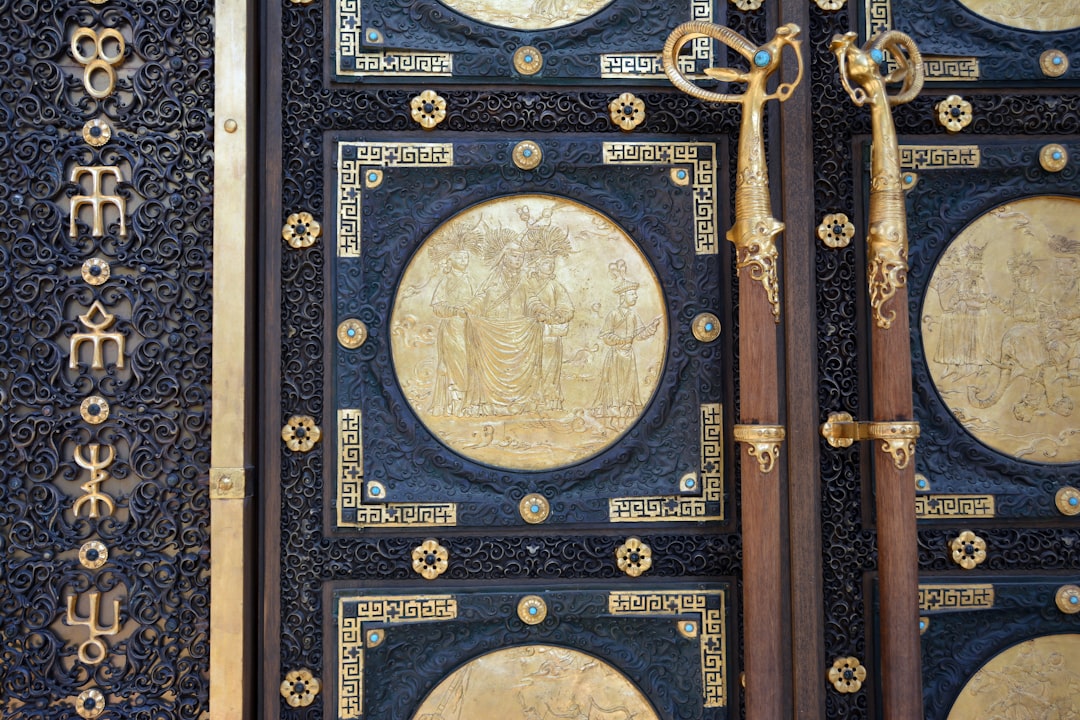For centuries, Mesopotamia was a melting pot of cultures and civilizations. Among them were the enigmatic Amorites, who have left an indelible mark on the ancient Near East. Their origins, society, culture, and religion have long been a subject of fascination and debate. In this article, we shed light on who the Amorites were, what they contributed, how they lived, their conquests, and much more. Read on to satisfy your curiosity and deepen your knowledge of this intriguing ancient civilization.
Origins of the Amorites

Believed to be one of the earliest civilizations of Mesopotamia, the Amorites were a group of nomadic tribes that travelled from the Levant region into the ancient Near East around 2000 BCE. Despite being known for their fierce warriors and powerful kings, not much is known about the origins of the Amorites.
Here are a few key points about the ancient Amorites:
- The Amorite migration is thought to have been triggered by famine, drought, and other environmental and economic pressures in their homeland.
- They initially settled in the cities of Sumerians, Akkadians, and Babylonians, where they eventually gained control through military conquests and alliances.
- The term “Amorite” was not used by the Amorites themselves but was given to them by their neighbors, the Canaanites.

Despite their origins being somewhat mysterious, the Amorites left a lasting impact on the ancient world through their conquests, culture, and religion. Keep reading to learn more about how they shaped ancient Mesopotamia.
[List of sources]:
- Albright, W. F. (1935). “The Amarna Letters from Palestine (Syria and Lebanon)”. Bulletin of the American Schools of Oriental Research.
- Bryce, T. (2014). The World of the Neo-Hittite Kingdoms: A Political and Military History. Oxford: Oxford University Press.
- Van De Mieroop, M. (2005). King Hammurabi of Babylon: A Biography. Hoboken, NJ: Wiley-Blackwell.
Amorite Civilization and Society
The Amorites were a group of nomadic tribes that migrated to Mesopotamia around 2000 BCE. They were known for their fierce warriors, and they quickly established themselves as a dominant force in the region. The Amorites were instrumental in the rise of Hammurabi’s Babylonian Empire, and they contributed greatly to the culture and society of ancient Mesopotamia.
The Amorites were known for their advanced civilization and society, which was characterized by impressive architecture, extensive trade networks, and a complex legal system. Amorite cities were some of the largest and most impressive in the ancient world, and they were built with an eye towards both beauty and functionality.
The Amorites were also skilled artisans, and they produced some of the most beautiful pottery and other artifacts of the ancient world. Their artwork was highly prized by their contemporaries, and many of their pieces can still be found in museums around the world today.
In addition to their impressive material culture, the Amorites were also known for their sophisticated legal system. Hammurabi’s Code, one of the earliest known legal codes, was established by an Amorite king and remains a cornerstone of legal theory to this day. This code established a set of laws and punishments that were meant to be enforced fairly across society, and it is considered to be one of the earliest examples of social justice in history.
The Amorite society was also highly militarized, and their prowess on the battlefield was the stuff of legend. Known for their bravery, discipline, and high level of organization, Amorite warriors were feared and respected by their enemies. They were instrumental in many of the conquests and wars that shaped the region during their time.
Overall, the Amorites were a highly advanced civilization that contributed greatly to the culture and society of ancient Mesopotamia. Their legacy can still be seen today in the many artifacts, architecture, and legal systems that they left behind, and they remain a fascinating subject of study for anyone interested in the ancient Near East.
Amorite Artifacts and Architecture
When discussing the ancient Amorite civilization, it is impossible not to talk about their impressive artifacts and architecture. Despite being a nomadic tribe in their early history, the Amorites became successful in creating great settlements and cities.

Here are some fascinating Amorite artifacts and architectural icons that have remained noteworthy to this day:
-
Amorite Pottery
Amorite pottery is a unique and essential feature of their culture. Their pottery has defined characteristics, with distinctive patterns, shapes, and artistic impressions. The Amorite pottery was used for various purposes such as cooking, storage, and religious rituals. -
Amorite Temples
The Amorites were known for their impressive temple structures dedicated to their pagan gods. The famous Temple of Ishtar of Mari and the Temple of Marduk of Babylon are some of the most iconic Amorite temples left behind. These temples were massive structures, often adorned with intricate carvings and artwork. -
Amorite Palaces
The Amorite kings were known for building grand palaces within their cities. Several of these palaces could measure up to 30,000 square feet in size. These structures featured courtyards and gardens, and the interiors were extensively decorated with murals and paintings. -
Amorite Walls and Gates
Amorite cities were also characterized by their impressive fortified walls, with entrance gates adorned with reliefs and sculptures. These walls served as protection against invading armies, and the gates were used as a form of city declaration of power. -
Amorite Architecture
The Amorite architecture included various materials, including mud bricks and limestone. They were known for building multi-story buildings, something that wasn’t previously done during the pre-Amorite era.
In conclusion, the Amorites left significant imprints on the architectural industry, significantly impacting Mesopotamia and the Levant region’s social and cultural developments. Their style of architecture and craftsmanship was impeccable, with impressive artistry that speaks volumes about their culture and skills.
Amorite Conquests and Contributions
The Amorites were a group of nomadic tribes who were constantly on the move. They were known for their aggressive nature and their ability to conquer neighboring cities and regions. In fact, the Amorites were responsible for the downfall of many of the powerhouses of ancient Mesopotamia, including the Akkadians, Sumerians, and Babylonians.
The Amorites were renowned for their warfare tactics, which allowed them to conquer vast territories quickly. They were known for their skilled use of chariots and horses, both of which were significant advantages over their opponents. Additionally, the Amorite warriors were feared for their fighting skills, which allowed them to defeat even the most seasoned of armies.
Despite their aggressive nature, the Amorites contributed significantly to the development of ancient Mesopotamia. The most notable contribution of the Amorites was the establishment of the Hammurabi dynasty, which was responsible for creating the world-famous Hammurabi Code of Laws. This code was the first known set of laws that claimed to apply to everyone in the land, regardless of social status or wealth.
In addition to their contributions to law, the Amorites also made significant contributions to architecture. They were responsible for the construction of some of the most magnificent buildings and cities in the ancient Near East. The Amorite architecture was characterized by its grandiosity and extravagance, which was intended to showcase the power and wealth of the Amorite kings.
« Discover the Secrets to Becoming a Godly Man – Bible’s Divine Guide Revealed
Unveiling the Astonishing Power and Hidden Meaning behind the Strong Bulls of Bashan in Psalm 22:12 – You Won’t Believe What You’ll Discover »
Finally, the Amorites also played a significant role in the development of religion and mythology in ancient Mesopotamia. The Amorites were known for their belief in a pantheon of gods and goddesses, which was not dissimilar to the beliefs held by the Sumerians and Akkadians. The Amorites also contributed to the development of the Babylonian creation myth, which is still studied and revered by many scholars today.
In conclusion, the Amorites were a group of nomadic tribes who contributed significantly to the development of ancient Mesopotamia, both through their conquests and their cultural contributions. Despite their aggressive nature, the Amorites left a lasting legacy that is still felt today in the architecture, religion, and mythologies of the ancient Near East.
Amorite Religion and Mythology
The Amorites, like many ancient civilizations, had a complex religion and mythology. Their beliefs were a blend of indigenous and Babylonian traditions, which they adopted after centuries of cultural exchange.

Here are some key aspects of Amorite religion and mythology:
-
Polytheism: The Amorites believed in multiple gods and goddesses who governed different aspects of life. Some of the most significant deities were Hadad, god of storms and fertility; Ishtar, goddess of love and war; and Shamash, god of the sun and justice.
-
Sacrifice: The Amorites practiced animal sacrifice to appease their gods and ensure good harvests, health, and victory in battle. They also offered votive offerings in the form of statues, jewelry, and pottery.
-
Divination: The Amorites used various methods to divine the will of the gods, such as reading omens, examining animal entrails, and interpreting dreams.
-
Myths: The Amorites told stories about their gods and heroes, which explained the origin of the world, the nature of human existence, and the meaning of life. One of the most famous myths is the Epic of Gilgamesh, which features a hero who seeks immortality and wisdom.
-
Afterlife: The Amorites believed in an afterlife, where the souls of the dead were judged by the gods and either rewarded or punished. They buried their dead with grave goods such as weapons, jewelry, and food to ensure a comfortable journey to the underworld.
Despite the importance of religion in Amorite society, little is known about their temples and rituals. However, archaeologists have uncovered numerous artifacts and architectural remains that shed light on their beliefs and practices.
Some notable examples include the palaces and temples of Amorite kings, such as Hammurabi of Babylon, and the vast cemetery of Ebla, where thousands of burials have been excavated.
The legacy of the Amorites can be seen in the religions and cultures that followed them in the Near East, such as the Canaanites and the Israelites. Overall, their contributions to ancient Mesopotamia were significant, and their civilization deserves to be studied and appreciated for its unique achievements.
In summary, the Amorites had a rich and diverse religion and mythology, which reflected their complex worldview and cultural heritage. Their beliefs and practices provide valuable insights into the spiritual life of ancient Mesopotamia and the history of human civilization as a whole.
The Influence of the Amorites on Ancient Mesopotamia

The Amorites were nomadic tribes that lived in the Levant region, modern-day Syria, Lebanon, Israel, and Jordan. They were a people who migrated from the Arabian Peninsula to Mesopotamia around 2000 BCE and eventually established a kingdom that dominated the ancient Near East. Despite being considered outsiders by the established civilizations of Sumerians, Akkadians, and Babylonians, the Amorites made important contributions to the region’s cultural and political landscape.
One of the most significant Amorite rulers was Hammurabi, who established the Babylonian Empire and was responsible for the famous Hammurabi Code, a set of laws that unified the diverse peoples under his rule. The Code addressed issues such as property rights, trade, and contracts, and was written on a stele that depicted the Babylonian king receiving the laws from the god Shamash.
The Amorites also had a significant influence on the region’s architecture and art. They built impressive settlements and cities, such as Mari, which was a hub of trade and culture, and Dur-Kurigalzu, which was the capital of the Kassite dynasty. Their buildings were characterized by massive walls, domes, and vaults and were decorated with intricate carvings and sculptures.
Amorite culture also made its mark on the region’s religion and mythology. The Amorites worshipped a pantheon of gods, including their chief deity, Amurru, who was associated with the god Marduk of Babylon. They believed in an afterlife and practiced funerary rites that included burying the dead with precious objects such as jewelry, pottery, and metalwork.
The Amorites’ military prowess was also noteworthy. They were fierce warriors who conquered many neighboring kingdoms, including the Sumerians and Akkadians. Their conquests and military alliances helped to create a cultural melting pot in the region, where different peoples shared ideas, beliefs, and practices.

The Amorites’ influence on the ancient Near East can still be seen today in the remnants of their civilization. Archaeologists have uncovered many Amorite artifacts, including pottery, jewelry, and metalwork. Their art and architecture have also influenced subsequent civilizations, such as the Assyrians and the Persians.
In conclusion, the Amorites were a significant and influential civilization that left a lasting legacy in the ancient Near East. Their contributions to Mesopotamian culture, politics, and religion are a testament to their resilience and adaptability as a people. Whether you’re interested in history, religion, or art, exploring the Amorites’ legacy is an enlightening and enriching experience.


















